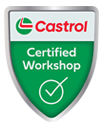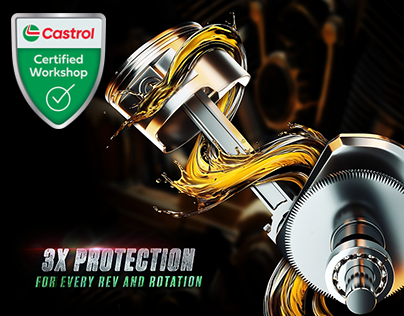Get a quote today
Are you looking for Clutches & Transmission for your vehicle?
How would you detect a malfunctioning clutch?
Symptoms of a malfunctioning clutch
Usually, worn out clutches produce the following symptoms:
Burning smell
Does your car emit a burning smell similar to that of burning rubber?
It might be a sign of an overheating clutch, causing the clutch plate to wear. It is the most common issue in slow-moving traffics and requires immediate attention.

Clutch slipping out of gear
A clutch that slips out of gear while driving requires immediate attention. Such an issue might indicate potential signs of oil leakage from the crankshaft that lubricates the clutch plate.
Soft clutch
It is among the earliest signs of a worn-out clutch. You can drive your car for a short distance and examine how the clutch behaves and how far you have to let out the clutch before the gear holds.
Juddering in the clutch pedal
Sudden and odd juddering in the clutch pedal signals compromised disc grip on the flywheel. If you ignore this issue for a long time, it can seriously jeopardise your driving safety.
If you notice any of these symptoms, give us a call or pop in for us to take a look. Inoring such signs can lead to costly repairs and cause issues with your vehicle’s acceleration and deceleration, which can further hamper your on-road driving safety.
Priorslee Motor Services Telford for clutch repairs and replacement
Our comprehensive checks on a vehicle’s clutch components make us a go-to destination for all motorists around the region.
When you visit us for any clutch repair Telford, our highly-trained experts will conduct a thorough inspection on the following clutch elements:

- Pressure plates
- Discs
- Cables
- Flywheel
- Clutch plate
- Fork
- Pilot bearing
After a comprehensive inspection, our mechanics will provide you with the most effective solution for repair or replacement.
Visit our workshop at Unit F1 Castle Trading Estate, Priorslee, Telford TF2 9NP
For further queries about our clutch service Telford, contact us on 01952 615939.
Your Clutch and how it works:
It transmits engine power to the gear box, and allows transmission to be interrupted while a gear is selected to move off from a stationary position, or when gears are changed while the car is moving.
Hydraulic clutch system
Most cars use a friction clutch operated either by fluid ( hydraulic ) or, more commonly, by a cable.
When a car is moving under power, the clutch is engaged. A pressure plate bolted to the flywheel exerts constant force , by means of a diaphragm spring, on the driven plate .
Earlier cars have a series of coil springs at the back of the pressure plate, instead of a diaphragm spring.
The driven (or friction) plate runs on a splined input shaft , through which the power is transmitted to the gearbox. The plate has friction linings, similar to brake linings, on both its faces. This allows the drive to be taken up smoothly when the clutch is engaged.
When the clutch is disengaged (pedal depressed), an arm pushes a release bearing against the centre of the diaphragm spring which releases the clamping pressure.
The outer part of the pressure plate, which has a large friction surface, then no longer clamps the driven plate to the flywheel, so the transmission of power is interrupted and gears can be changed.
Clutch engaged
The diaphragm spring is holding the driven plate.
Clutch disengaged
The release bearing has depressed the diaphragm spring.
When the clutch pedal is released, the thrust bearing is withdrawn and the diaphragm-spring load once again clamps the driven plate to the flywheel to resume the transmission of power.
Some cars have a hydraulically operated clutch. Pressure on the clutch pedal inside the car activates a piston in a master cylinder , which transmits the pressure through a fluid-filled pipe to a slave cylinder mounted on the clutch housing .
The slave-cylinder piston is connected to the clutch release arm.
Parts of the clutch
The modern clutch has four main components: the cover plate (which incorporates a diaphragm spring), the pressure plate, the driven plate, and the release bearing.
The cover plate is bolted to the flywheel, and the pressure plate exerts pressure on the driven plate through the diaphragm spring or through coil springs on earlier cars.
The driven plate runs on a splined shaft between the pressure plate and flywheel.
It is faced on each side with a friction material which grips the pressure plate and flywheel when fully engaged, and can slip by a controlled amount when the clutch pedal is partially depressed, allowing the drive to be taken up smoothly.



